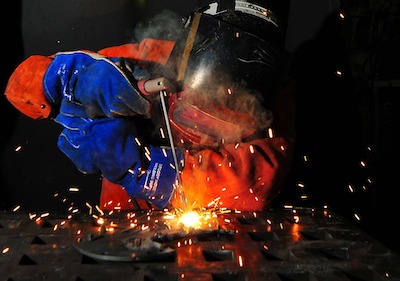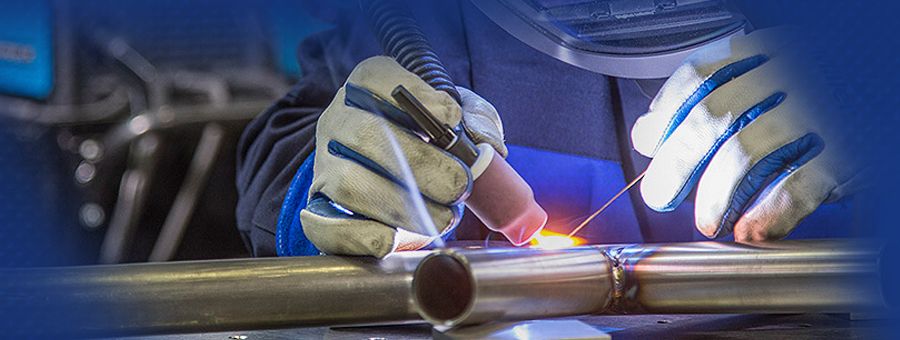Typical Welding Repair Work Issues and How to Address Them Efficiently
Welding repair work often encounter a variety of issues that can endanger the honesty of the last product. Usual problems consist of insufficient penetration, porosity, and misalignment, among others. Each defect provides special obstacles that call for details strategies for resolution. Comprehending these issues is crucial for welders aiming to boost their results and abilities. This conversation will discover these common welding repair concerns and reliable approaches to address them.
Poor Infiltration
Insufficient infiltration happens when the weld metal falls short to totally fuse with the base product, leading to weak joints and possible structural failings. This issue frequently stems from not enough warm input, incorrect electrode angle, or inappropriate welding speed. Welders might come across inadequate penetration as a result of a miscalculation of the required parameters for a specific material density or kind. Furthermore, contamination on the base material's surface can hinder reliable bonding, intensifying the problem. To resolve poor infiltration, welders need to guarantee appropriate setups on their equipment and preserve a clean job surface. Regular evaluation of welds is suggested to recognize any shortages early, enabling timely improvements and the prevention of endangered architectural integrity in welded settings up.
Porosity
Porosity is an usual problem in welded joints that materializes as small gas bubbles entraped within the weld metal. This flaw can jeopardize the stability of the weld, bring about decreased stamina and potential failing under anxiety. Montana Mobile Welding and Repair Fabrication. Porosity normally emerges from contamination, wetness, or improper welding strategies, which permit gases to get away into the molten weld pool. To address porosity, welders need to ensure proper surface area prep work, preserve a clean working setting, and use appropriate welding criteria. Furthermore, choosing the right filler material and protecting gas can mitigate gas entrapment. Regular evaluation and screening of welds can help identify porosity early, guaranteeing timely corrective actions are taken, thereby protecting the quality and reliability of the bonded framework
Misalignment
Imbalance in welding can develop from different factors, including inappropriate configuration and thermal expansion. Comprehending the root creates is necessary for reliable resolution. Numerous modification methods are offered to realign parts and ensure structural integrity.
Root causes of Misalignment
Welding imbalance commonly stems from a variety of underlying problems that can compromise architectural honesty. One primary reason is inappropriate fit-up of elements prior to welding, which can bring about spaces and unequal surface areas. Variations in thermal development during the welding procedure can additionally result in distortion, especially if the materials being signed up with have different coefficients of development. Furthermore, inadequate fixturing and clamping may fail to hold elements safely in position, leading to motion throughout welding. Improperly conserved equipment, including welding devices and devices, may present incongruities in the weld bead, more adding to misalignment. Driver mistake, stemming from inadequate training or experience, can also play a significant duty in producing misaligned welds.

Adjustment Techniques Readily Available
Dealing with misalignment properly calls for a combination of restorative techniques customized to the certain issues available. One common technique is making use of fixtures or jigs to hold parts in the correct placement throughout welding, making sure regular positioning. In addition, pre-heating the products can help in reducing distortion and improve fit-up. For significant imbalance, mechanical realignment methods, such as making use of hydraulic jacks or clamps, can be employed to remedy the setting prior to welding. Post-weld warm therapy may also be required to relieve anxieties brought on by misalignment. Lastly, careful assessment and change throughout the arrangement phase can protect against imbalance concerns from coming to be considerable issues, promoting a smoother welding procedure and enhancing overall structural integrity.
Distortion
Distortion is a common challenge in welding that can arise from various elements, including irregular heating & cooling. Understanding the root causes of distortion is crucial for carrying out reliable prevention techniques. Addressing this issue not just boosts architectural integrity however additionally enhances the overall quality of the weld.
Reasons for Distortion
When based on the intense warm of welding, materials usually undergo modifications that can cause distortion. This sensation mainly develops from thermal growth and tightening throughout the welding process. As the weld area warms up, the material broadens; upon cooling, it contracts, which can develop interior stresses. Furthermore, uneven heating across a workpiece can aggravate these stress and anxieties, leading to bending or bending. The kind of product likewise plays a substantial function; steels with differing thermal conductivity and coefficients of development may respond in different ways, causing unpredictable distortions. Additionally, inadequate joint layout and poor fixturing can contribute to imbalance during welding, increasing the chance of distortion. Understanding these reasons is necessary for effective welding repair and prevention approaches.
Prevention Techniques
Effective avoidance techniques for distortion throughout welding focus on managing warm input and making certain correct joint style. Keeping a regular heat input assists to lessen thermal development and tightening, which can lead to distortion. Using strategies such as pre-heating the work surface can additionally reduce the temperature level gradient, advertising consistent heating. Additionally, choosing suitable joint styles, such as T-joints or lap joints, can boost stability and lower tension concentrations. Executing appropriate fixturing to protect the Your Domain Name workpieces in position even more aids in preserving alignment during the welding procedure. Staggered welding sequences can disperse warm more uniformly, avoiding localized distortion. By applying these strategies, welders can considerably reduce the possibility of distortion and enhance the general quality of their welds.
Splitting
Breaking is a typical problem encountered in welding repairs, typically arising from different variables such as inappropriate air conditioning prices, product selection, or poor joint preparation. The occurrence of cracks can significantly jeopardize the stability of the weld, causing prospective failings during procedure. To address this problem, welders should initially analyze the source, making sure that products work and properly picked for the specific application. Furthermore, regulating the cooling price throughout the welding process is vital; rapid air conditioning can generate tension and cause splitting. Appropriate joint design and prep work also contribute to decreasing the risk. Applying these techniques can improve weld quality and durability, ultimately decreasing the likelihood of splitting in finished weldments.

Incomplete Combination
A considerable issue in welding repairs is insufficient combination, which occurs when the weld metal does not appropriately bond with the base product or previous weld passes - Belgrade Welding. This problem can cause weaknesses in the joint, possibly endangering the stability of the bonded framework. Variables adding to incomplete fusion include not enough heat input, improper welding technique, and contamination of the surface areas being joined. To address this concern successfully, welders must guarantee proper pre-weld cleansing and surface area prep work, along with readjust their welding specifications to achieve ample penetration and fusion. Regular inspection during the welding procedure can additionally help recognize insufficient combination early, enabling click reference prompt rehabilitative steps to boost the total high quality of the weld
Overheating
While welding fixings can enhance structural stability, overheating provides a substantial challenge that can bring about material destruction. Too much heat during welding can modify the mechanical properties of steels, resulting in minimized toughness, boosted brittleness, and bending. This sensation is especially vital in high-stress applications where structural dependability is extremely important. Identifying overheating can include visual evaluations for discoloration or distortion, as well as keeping an eye on temperature throughout the welding procedure. To reduce the dangers related to getting too hot, welders need to employ proper methods, such as controlling warm input, changing travel speed, and making use of ideal filler products. Additionally, carrying out pre- and post-weld warmth treatments can help bring back material homes and improve the overall quality of the fixing, making sure long-lasting efficiency and safety and security.
Regularly Asked Inquiries
What Are the Usual Signs of a Welding Problem?

Exactly How Can I Examine My Welds for Quality?
To examine welds for quality, one can use visual evaluations, ultrasonic screening, and radiographic approaches. Each method guarantees architectural stability, identifies flaws, and confirms adherence to specified requirements, ultimately enhancing the integrity of the bonded joints.
What Safety Preventative Measures Should I Take While Welding?
When welding, one need to prioritize safety by wearing appropriate personal safety devices, ensuring correct air flow, securing combustible products away, keeping a tidy work space, and understanding environments to stop accidents and injuries.
Can I Fix a Weld Without Remodeling the Entire Joint?
Fixing a weld without redesigning the entire joint is possible, relying on the damages (Belgrade Welding). Strategies such as grinding, adding filler material, or making use of a welding procedure can successfully deal with certain problems while protecting the surrounding structure
What Tools Are Vital for Effective Welding Fixes?
Necessary tools for effective welding repairs include a welding maker, cable brush, grinder, safety equipment, clamps, and filler materials. Each device plays an important role in ensuring high quality and safety during the repair procedure. Porosity typically emerges from contamination, dampness, or inappropriate welding strategies, which enable gases to escape right into the liquified weld swimming pool. Badly kept devices, consisting of welding machines and tools, may present variances in the weld grain, more contributing to misalignment. When subjected to the extreme warmth of welding, materials typically go through modifications that can lead to distortion. Breaking is a typical concern experienced in welding repairs, commonly unique welding resulting from numerous elements such as improper air conditioning rates, product option, or poor joint preparation. A substantial concern in welding fixings is insufficient blend, which occurs when the weld steel does not adequately bond with the base product or previous weld passes.